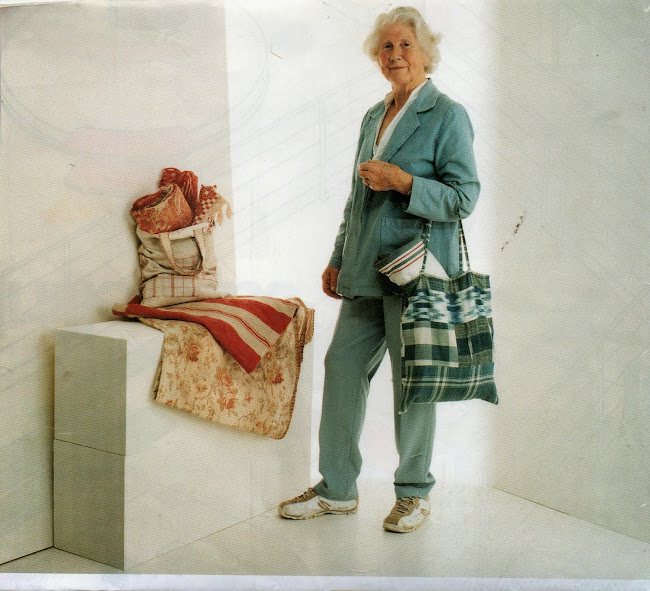Wednesday 26 November 2014
I GO FOR INDIGO- DO YOU?
Indigo has been used for dyeing fabrics, decorating bodies and walls for thousands of years and many tribes have used it in their different cultures in strange and interesting ways. I have a book called BEYOND INDIGO which is a fascinating well illustrated account all about the Adire culture in Nigeria, designed to communicate and express the thoughts and wishes of the women who have built up a whole coded language in squares of different tied and dyed fabrics. Indigo dye has been available to dyers in the Near and Far East since earliest times, and in Europe, Woad has been a near equivalent, tho' its use died out a long time ago and has only recently been revived. The attached picture is of an Indigo mattress cover from France which were in general use in the last two centuries - the older versions have much greater detail and variety but all are striped. In the 18c. linen and hemp were dyed , but much more usually they were woven with checks or flamme (tie-dyed) stripes and have a vibrant quality which is missing in the more modern cotton mechanically woven cloth Many early quilts were decorated with hand carved or etched blocks and copper plates and are now highly prized by many decorators. The older fabrics when washed and used over a long period, fade to a lovely washed out sky blue also much sought after by decorators - but of course the fabric is then often damaged by constant use and not fit to be used for upholstery. The cover I show here is in excellent condition, measures 6' X 4, double sided, and would make good garden seating, boat furnishing, and is usually very popular with the male members of the household as it looks so classic and smart and wears for ever! These are now fast disappearing from the textile markets and I do not care for the really modern copies which are almost black and will never fade to my preferred shades.
Subscribe to:
Post Comments (Atom)



No comments:
Post a Comment